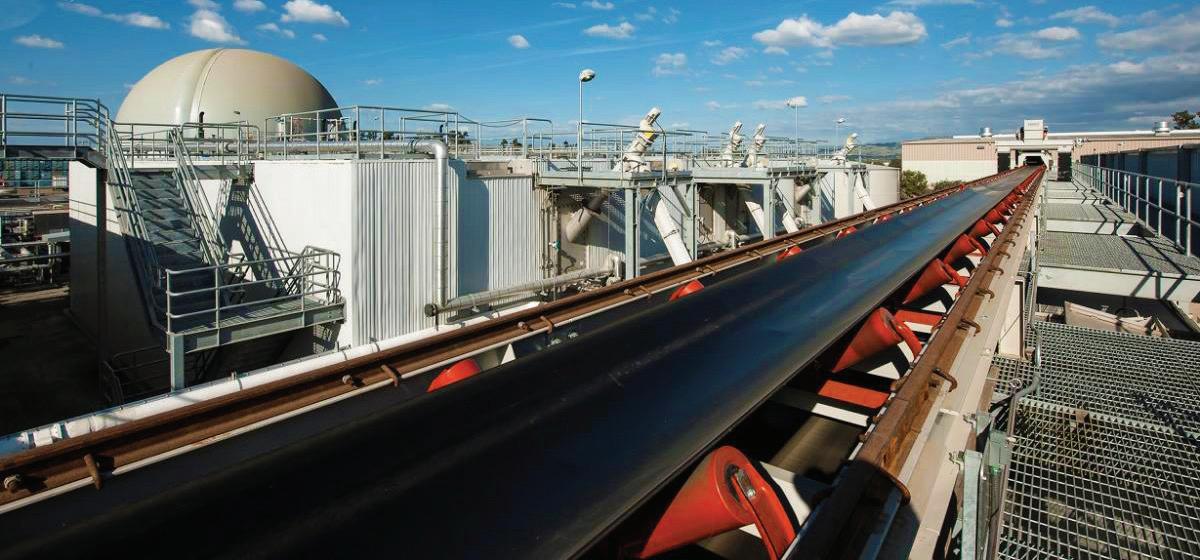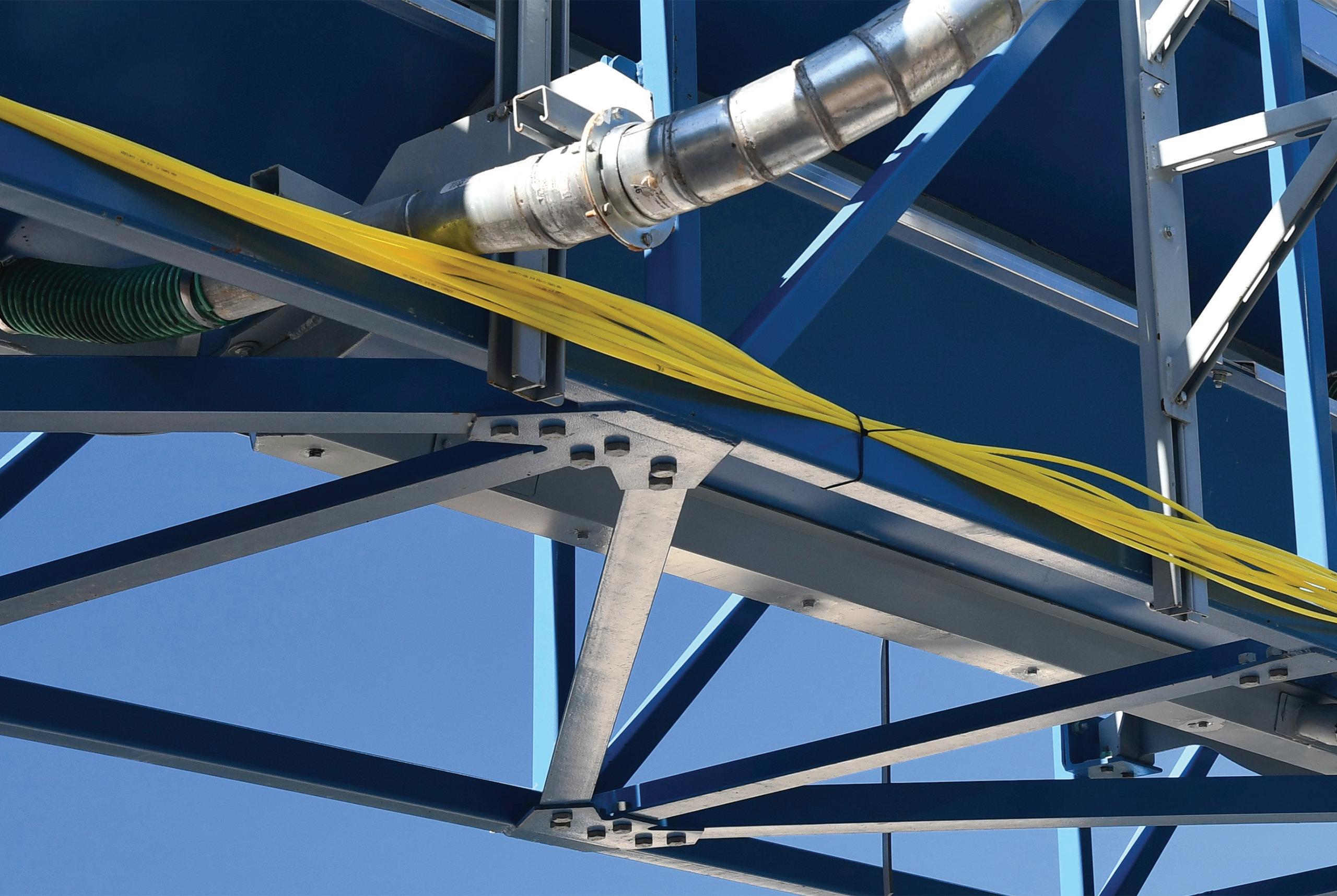
6 minute read
The Environmental Impact of Wood Pellet Electricity
BY JENNIFER JENKINS
Earlier this summer, Enviva was pleased to share a new piece of peer-reviewed research conducted by the team at Boundless Impact Investing, an independent research firm specializing in climate analytics for investors. At the request of one of our largest unitholders, Boundless initially engaged with Enviva in the summer 2019 to begin to understand the carbon impact of wood pellet energy, as well as the sustainability of Enviva’s supply chain. We found their work to be of such high quality that we asked them to conduct a deeper dive that could illustrate this more rigorous approach to carbon accounting, and to enable this research to be peer reviewed and shared widely. We are delighted to share their independent work.
As part of this research, Boundless used recent peer-reviewed literature on the greenhouse gas (GHG) impacts of wood pellets to create a life cycle analysis of GHG emissions from the wood pellet supply chain. They compared the performance of electricity generated using wood pellets versus other fuels such as coal and natural gas, examined Enviva’s supply chain in the U.S. Southeast, and conducted an analysis of the U.K., German, and Japanese power sectors to understand the overall impact of bioenergy on meeting country-level GHG targets.
Boundless’s entire piece is important, but the following are some highlights regarding three key facts from the report.
For steady-state working forests, you get the same net climate impact result no matter what as-
sumptions are used for carbon accounting. The bottom line is this: crediting biogenic carbon uptake prior to combustion (i.e., the conventional approach applied in regulatory practice, where stack emissions are set to zero as long as the biomass is sourced from a region with stable or increasing carbon stocks) yields the same result for working forests as the carbon-debt accounting approach in which a debt is assigned at the time of combustion and is paid back as the forest regrows.
Renewable, baseload bioenergy enables the re-
newable electric grid. Solar and wind energy are important parts of the overall transition to a renewable energy grid, but these renewable sources are intermittent, meaning they don’t produce power during times of the day or year when the wind doesn’t blow or sun doesn’t shine. Boundless found that we can balance the electricity grid with biomass to provide stability for other renewable sources of energy.
The carbon benefits of good biomass are clear.
Boundless is careful to explain that its analysis is limited to the specific case of wood sourced sustainably as a by-product of a traditional timber harvest where the land returns to forested use, from a region with stable or increasing forest carbon stocks. In this we agree, of course—not all biomass is good biomass.
Biomass is essentially a natural storage vessel for energy from the sun. Trees from working forests are continuously recycling carbon from the atmosphere to trees and back. In contrast, fossil fuels represent a one-way trip for carbon from geologic storage to the atmosphere. As long as the requirements for good biomass are met, we can mitigate GHG emission by substituting bioenergy for fossil fuels.
Contract:Jennifer Jenkins Vice President and Chief Sustainability Officer, Enviva www.envivabiomass.com info@envivabiomass.com
Forests and Fires: Perfect Together, However…
BY ROBERT WILLIAMS
Foresters and landowners in the forestry community are very aware of the impact of fires on our landscapes. Many of us use fire to provide conservation stewardship to forest ecosystems. As we now see with the ongoing historical wildfire events across the U.S., society needs to assess ways to live with fire, as opposed to continuing the longterm war on fire.
The debate now rages whether climate change is causing these catastrophic wildfires. Little consideration is given to the long-term, benign neglect of our public forests and its effects. People must begin to understand and accept that fire in the forest is as natural as rain or sunshine; it’s how we need fires to behave in the forest that has become a concern.
Fire has helped forests evolve for thousands of years. Many people remain under the illusion that prior to European settlement, forests in North American were carpets of pristine, old-growth forests. Nothing could be further from the truth. Most forests were occupied and intentionally managed by Native Americans and fire was their primary tool.
I’m not suggesting we can go back to the methods Native Americans utilized to sustain forested lands, but we can learn much from them. Mitigating the damages resulting from uncontrolled massive wildfire is going to take many years and complex solutions. We didn’t get here over night, but by decades of poor land management decisions, policies and government regulation.
The past 40 years of hands-off preservationist policy discouraging active conservation stewardship on the land has led to forests overstocking themselves—an unnatural buildup of fire fuels in both quantity and structure, resulting in increased size and intensity of forest fires. Politicians have accepted the premise of “Mother Nature knows best, thus, leave it alone.” This thinking has resulted in disaster.
Additionally, we have permitted construction of homes, businesses, and infrastructure in fire-prone landscapes, only exasperating the overall fire problem.
As to climate change issues, our forests should be a major component of solving that problem. They should be carbon sinks that help naturally remove CO2 from our atmosphere. Instead, they are at risk to become a major source of carbon release.
Throughout the country, the forest is too overgrown to apply prescribed fire, so tree removal is required. In many areas, we simply cannot burn our way out of the crisis. We must integrate planned tree and timber harvesting. Of course, harvesting trees is the activity that has caused many special interests to block forest management by any means politically and socially. This has resulted in a dramatic decline in active forest management on most public lands over the past 50-plus years.
The good news is we have many excellent examples of integrated burning and thinning that has resulted in restored forest ecosystems that are aesthetically beautiful, more resilient to fire and insects, and more biologically diverse than the neglected lands nearby. One can visit the beautiful restoration of Ponderosa Pine systems in Arizona, Oregon and Washington, the beautiful conifer forests in the mountains of California, or the beautiful restoral long leaf pine forests of Florida and Georgia. It is unfortunate that the work done is only a drop in the bucket as to the scale of things that needs to be done in all regions.
The use of fire has its limitations, thus mechanical removal or treatment of trees remains an essential tool. Many areas are too close to homes or infrastructure and smoke becomes a real problem. Getting the right weather conditions on a given day to allow for the intentional setting of a fire is very limited and difficult. There are also ecological concerns at times. Allowing a fire to destroy a seed bank or burn into the turf can have devasting impacts to some ecosystems. The bottom line is that this is all complex. But we need to get on with what we know works.
The management of many of our forests requires an understanding of the fire ecology of those forests. It is not possible technically, physically or economically to apply management to all our conserved forest lands. Thus, nature will continue to be a partner in our forest management strategies.
None of this will be easy. Much of the restoration work requires the removal of small-diameter trees with no markets for this wood. Our new vision for forest and fire policy will need to consider the economic and tax policies that can make the needed work economically feasible. Utilizing wood fiber for renewable energy may be one of the key players in the needed forest restoration and management program. Biomass, small-diameter timber, pulpwood and wood chips all will play a role.
Here in southern New Jersey, we have a fire culture on the land. Family forest landowners along with state fire wardens burn forests annually without concern or problem. It can be done—come see for yourselves.
Author: Robert R. Williams Certified Forester, Pine Creek Forestry bob@pinecreekforesty.com







